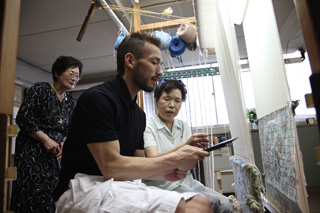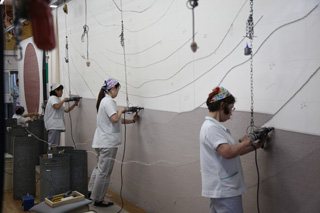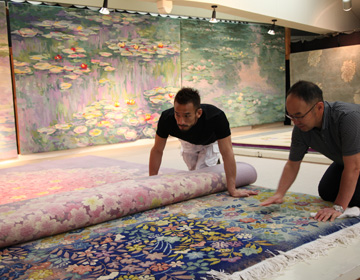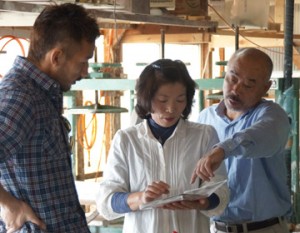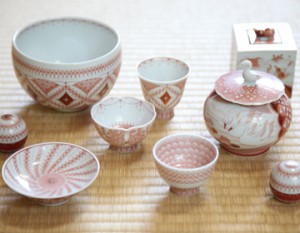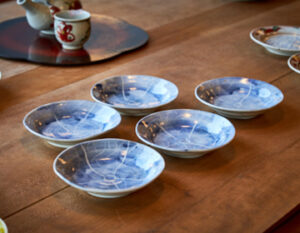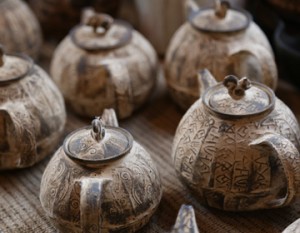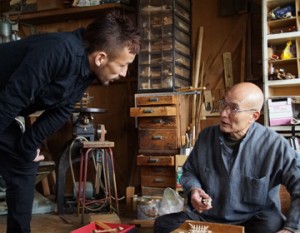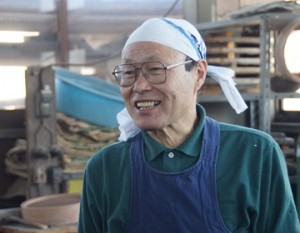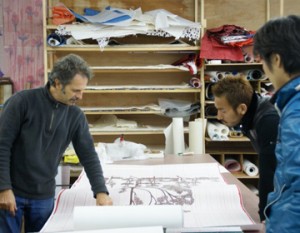How “dantsu” carpet began
”Dantsu” carpets are known for products like ”Nabeshima dantsu”. Other known products include ”Kurashiki dantsu”, or ”Sakai dantsu”, but there is also another variety of ”dantsu” with history in Yamagata. We visited Oriental Carpet Mills Ltd. who started the ”Yamagata dantsu”. A ”dantsu” is basically synonymous with “carpet” but generally, “carpet” describes long ones, while the word ”dantsu” generally describe short ones.
Of course there are many sizes, but generally it’s about the size of a rug at the front door of a house.
Dantsu first arrived in Japan from China in the Muromachi era (1336 – 1573 AD) through the Silk Road. As a domestic art, the weaving skill was mastered in Nagasaki and became the ”Nabeshima dantsu”. Later, the skill gradually spread throughout the country. However, the dantsu developed through a different route in Yamagata. It began when a workman was invited to Yamagata directly from China in the 1930s, and his skills were taught in Yamagata.
“A handwoven carpet will last for more than 100 years. We adopt a skill called “color fast dyeing” so the colors hardly fade.“ Watanabe said.
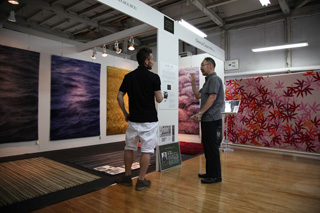
The birth of Yamagata dantsu
Oriental Carpet Mills was established in 1935. That year was a bad harvest, to the extent that girls were forced into prostitution. “My grandfather wished to do something about the situation, and started carpet making in this area.” President of the company Hiroshi Watanabe explained. First of all, he wanted to make a place where women could work. So he invited an instructor form China and learned how to make carpets. That’s how Yamagata dantsu was started.
The carpet that was made at the time, 70 years ago, was placed on the floor where we had the interview. It was good as new. It was so soft that we thought it had been stored under special conditions, but actually, the only care they take is a cleaning every 10 years, and nothing special. That and the skill level it took to produce the carpet surprised us very much.
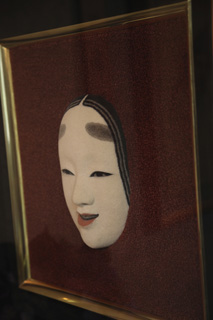
Traditional skills and new challenges
They continue to make handwoven carpets. The design is woven into the carpet according to the design drawing. It is a painstaking job, and only 7 to 8 centimeters can be woven a day. The carpet we saw is the result of all that work.
Despite its long history and tradition, Oriental Carpet Mills continues to seek new technology. One of their new technology is called “mercerization”. What we thought was a painting in a frame when we walked into the room was actually a carpet. There was a “noh” mask that was especially breathtaking. It was so detailed that we thought for sure it was a real mask, until we stepped up close. Mercerization is the technology that made it possible. Mercerization gives texture and luster to carpets, and at Oriental Carpet, they can express more than 20,000 colors. Recently, they collaborated with Yamagata-bred designer Kiyoyuki Okuyama and the architect Kengo Kuma, and released modern graphic patterns and a carpet that looks like a Japanese garden covered in moss.
The changing lifestyles have changed the requirements for rugs, carpets and dantsu, and the company takes new challenges adapting to the times. The creator of Yamagata dantsu keeps creating new items in such a fashion.
